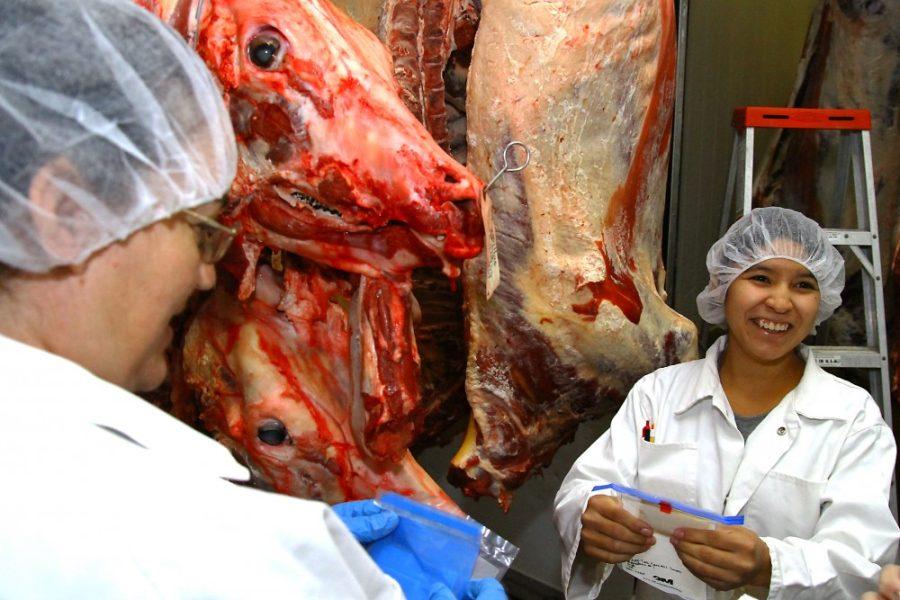Crystal Lopez isn’t squeamish.
The animal sciences senior has worked at the UA Animal Sciences Meat Science Laboratory for more than three years. The job requires her to come in close contact with the carcasses of freshly harvested animals.
The lab has facilities to slaughter and store cattle as well as other animals. Within 24 hours of the harvesting, all cattle must be tested for E. coli based on food safety protocol set by the U.S. Department of Agriculture.
Testing the animals is one of Lopez’s primary jobs. A carcass is chosen at random for Lopez to swab and test each week.
Lopez walks down the hall of the lab during her Thursday shift, dressed in a white coat reaching past her ankles and a hairnet. She opens the door of the meat freezer to reveal about 12 beef carcasses hanging from the ceiling and beef heads with eyes still intact.
The site disturbs some visitors, Lopez said. But Lopez, who participated in Future Farmers of America in high school, said she was not taken aback during her first time there.
“I was actually pretty OK with it,” she said. “I initially watched the entire harvesting process. It’s interesting how quickly it’s happening.”
Lopez then climbs on a ladder to reach the chosen carcass and swabs three areas: the round, the flank and the brisket. These areas have the highest risk of contamination, Lopez said.
The UA harvests its own animals as well as those brought to the facility by local families and farms. The UA harvests other animals such as goats, ostriches and pigs, but only the cattle require E. coli testing. Meat harvested elsewhere is also occasionally brought to the lab for testing, Lopez said.
Lopez mixes what she collected from the swab with a vial of powder. She pours the liquid into a SimPlate dish and then places it in an incubator.
Results are usually ready in about eight hours. The liquid can change color, and if it fluoresces under a black light, it means there’s probably E. coli in the sample, Lopez said.
“There’s usually not,” she said. “I don’t think I’ve ever had one.”
Lopez, who works 12 to 15 hours a week, also does nutritional analysis at the lab. People pay to have their products — like beef jerky — tested for moisture content and mineral content as well as the protein, sodium and carbohydrate content.
The lab then prints a report so the producer can create nutrition labels. The process is the most difficult aspect of her job, Lopez said.
“I have a deadline to get it out but there’s a lot to do with it,” Lopez said. “There’s a lot that can go wrong.”
When she started, Lopez worked in multiple areas of the lab, including packaging and labeling the meat butchered on site as well as doing laundry. Now, she works primarily in the lab, which she said is her favorite place to work because it’s unique.
“It’s different from other things people get to do,” Lopez said.
Lopez will graduate from the UA this month and hopes to continue working in the lab. She wants a career in some aspect of the livestock industry, she said.
Her ambitions in the lab have raised a few eyebrows from friends and classmates, however.
“They’re a little shocked because I’m so little and I’m a girl,” Lopez said. “They give me this look like, ‘Interesting, I wouldn’t have thought that.’”









